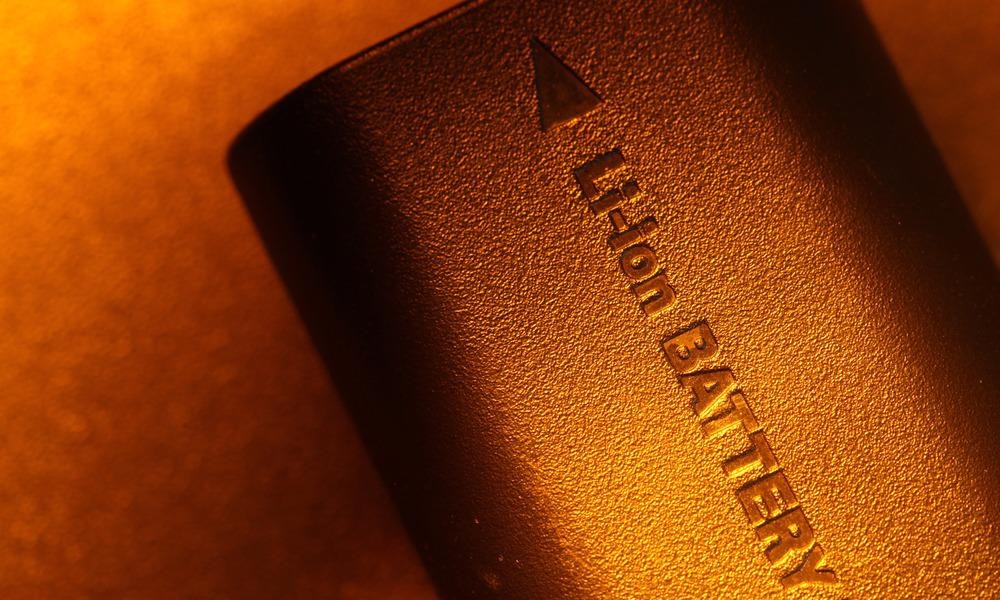In a study published in the journal Electrochimica Acta, a scalable and cost-effective technique for generating three-dimensional, structural, highly efficient lithium (Li) metal anodes is suggested, opening up new avenues for studies into Li metal and potentially other metal anodes.

Study: In-situ growth of iron nanoparticles on porous carbon nanofibers for structural high-performance lithium metal anode. Image Credit: Janaka Dharmasena/Shutterstock.com
The Holy Grail of Electrodes
The extensively employed Li-ion battery has met several problems in addressing the ever-increasing need for energy storing solutions with good energy densities and extended cyclic lifespans due to the fast growth of laptops, cell phones, and electric vehicles.
Owing to its excellent hypothetical specific capacity, low weight, and small reaction potential, lithium (Li) metal anodes have been regarded as the "Holy Grail" among electrode substances for the future of Li batteries. However, Li metal anodes have major Li dendritic growth issues that have slowed their commercialization.
Drawbacks of Using Lithium Metal Electrodes
The formation of Li dendrites is likely to create several issues. Dendrites that penetrate the divider and touch the cathode might cause short-circuiting inside the system and pose safety issues.
The interaction between Li metal and electrolytes consumes the activated Li metal substance and electrolytes permanently, significantly lowering Coulombic efficiency. During the cyclic process, Li dendrites will break off from the Li sheet, leaving a "dead" coating of Li that will diminish the Coulombic efficiency and raise the inner resistance of the Li battery, decreasing cyclic effectiveness.
The volumetric shift with every stripping or plating procedure for Li metal batteries is limitless. The most pressing challenges in the actual use of Li metal anodes are the adequate control of dendritic formation and the extension of Li battery cycling lifespan.
Addressing the Dendrite Problem with Different Processing Techniques
Different processing techniques have lately been used to produce framework substances for Li metal anodes which can limit the formation of dendritic Li and tolerate significant volume fluctuations. Adequate solid electrolyte interface (SEI) sheet development, optimizing the electrolytic makeup, and structurally designing a Li metal anode are all effective approaches to address the issue of dendritic Li formation.
The fabrication of synthetic SEI sheets is a technique for modifying dendritic growth and may enhance the effectiveness of Li stripping/plating. Nonetheless, owing to Li metal's intrinsic host-less character, the significant volumetric growth may cause a buildup of internal stresses, causing the SEI sheet to shatter over multiple cycles.
Recently, the development of a framework for Li metal anodes has been regarded as a successful method of addressing the issue of Li dendrite formation and volumetric changes. The current density and volumetric growth may be lowered by the architectural design of the Li metal anode, limiting the formation of dendritic Li and enhancing the effectiveness of Li metal anodes.
Porous Hosts for Lithium
Graphene, carbon fiber, metallic oxides, Mxenes, and metallic porous hosts having nano-engineered architectures have been formed as effective, three-dimensional, high porosity Li anode frameworks for improving the cyclic stability of Li metal composite anodes at high current density and capacity.
The incorporation of metallic atoms may increase the material’s adsorptive energy towards Li, resulting in homogeneous nucleation and depositing of Li metal. Furthermore, the inclusion of metallic atoms may provide an abundance of active spots for capturing Li ions, leading to improved electrochemical performance.
Key Findings of the Study
In this study, the framework of a porous carbon nanofiber scaffold adorned with iron nanoparticles (PCNF-Fe) was constructed in this research employing a new and innovative on-site growing approach that matched the designing criteria for an optimal Li metal composite electrode.
The PCNF-Fe substrate with a large specific area showed higher lipophilicity, which may successfully lower the Li nucleation overpotential and offer an abundance of nucleating active spots for Li-ions. The three-dimensional, high porosity, conducting framework aided the transfer of electrons and efficiently reduced localized current density, preventing the creation and growth of Li dendrites.
The carbon framework enriched with oxygen and nitrogen was more attractive to Li-ions and may enhance uniform Li nucleation. The porous host might have open pores to support the intrinsic volumetric fluctuations in the cyclic process and the transport of Li-ions.
In symmetrical cell evaluations, outstanding cycling stability and excellent Coulombic efficiency were obtained. Carbon nanofibers coated with iron nanoparticles are more prone to absorbing Li atoms, leading to more homogeneous Li deposition, according to density functional theory simulations.
Reference
Yu, Z., Han, D., Chen, J., Xu, Z., Liu, X., Yang, S., & Liu, Y. (2022). In-situ growth of iron nanoparticles on porous carbon nanofibers for structural high-performance lithium metal anode. Electrochimica Acta, 422. Available at: https://doi.org/10.1016/j.electacta.2022.140552
Disclaimer: The views expressed here are those of the author expressed in their private capacity and do not necessarily represent the views of AZoM.com Limited T/A AZoNetwork the owner and operator of this website. This disclaimer forms part of the Terms and conditions of use of this website.